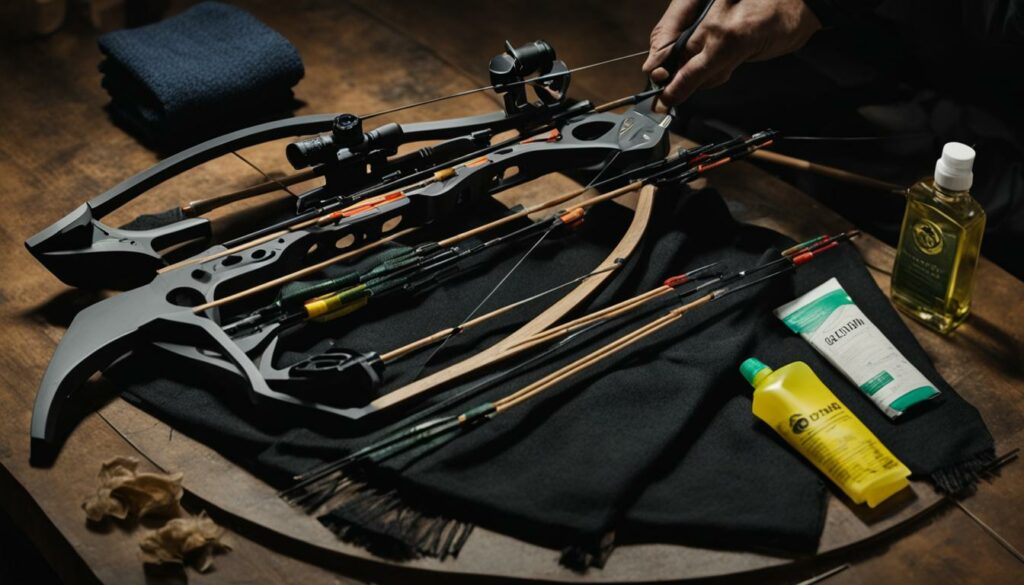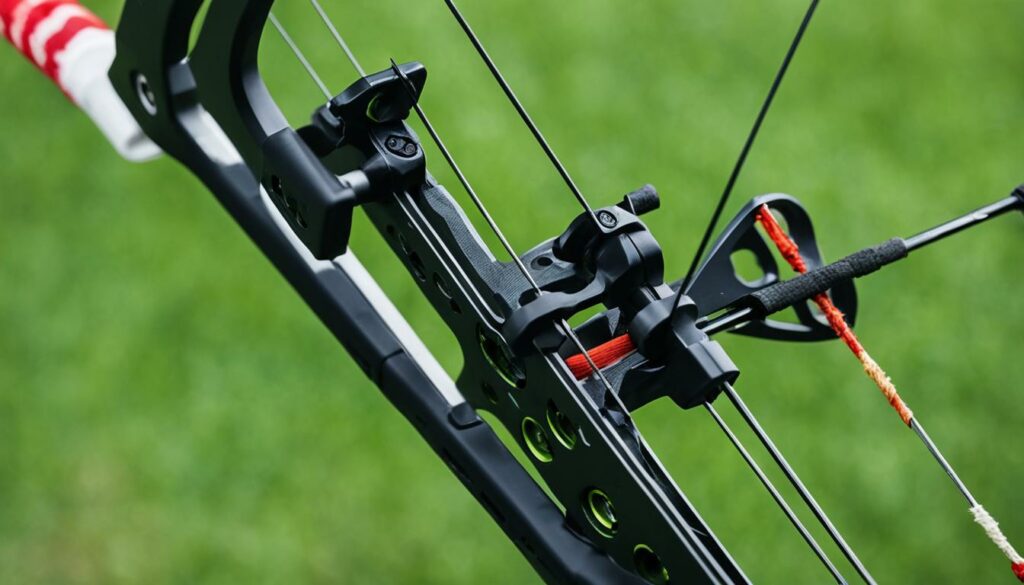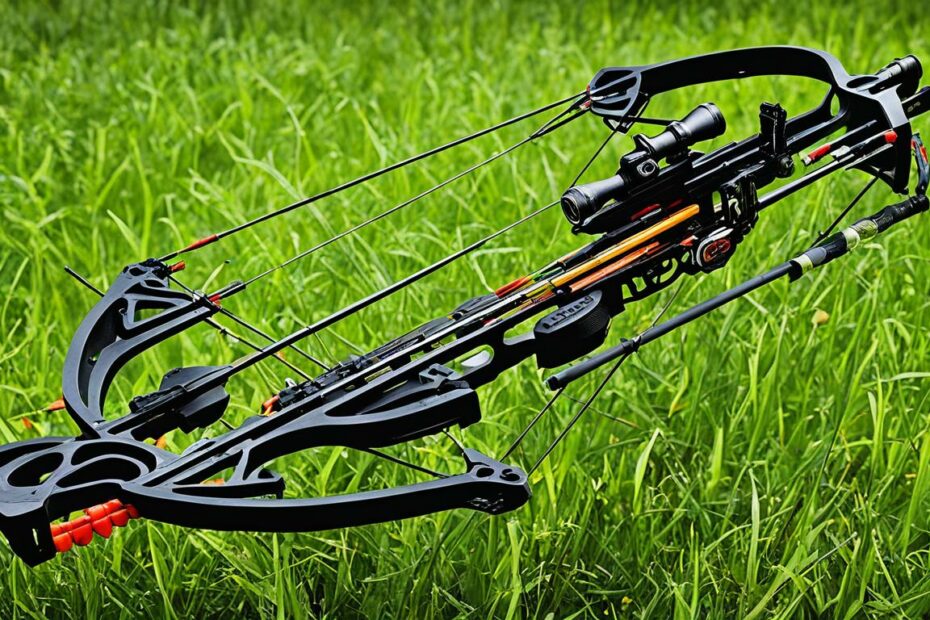The average lifespan of a compound bow can range from 5 to 10 years with proper care and maintenance. However, this can vary depending on several factors, including the materials’ quality, frequency of use, storage conditions, and maintenance practices.
High-quality materials, such as limbs, risers, and cams, are more durable and can withstand more wear and tear over time. Regular use and exposure to harsh conditions can accelerate the bow’s aging process.
On the other hand, proper care and maintenance, including regular waxing of the bowstring and prompt inspection for any signs of damage, can significantly extend its lifespan.
Factors Affecting Compound Bow Lifespan
Several factors can affect the lifespan of a compound bow. The quality of materials used to construct the bow, such as limbs, risers, and cams, can greatly impact its durability. Higher-quality materials are more durable and can withstand more wear and tear.
Additionally, the frequency of use can also affect the lifespan of a compound bow. Regular use and exposure to harsh conditions can accelerate the wear and tear on the bow.
Proper maintenance is also crucial in extending the lifespan of a compound bow. This includes regular waxing of the bowstring and inspection for any signs of damage.
Quality of Materials
The quality of materials used in a compound bow can significantly impact its lifespan. Higher-quality materials, such as carbon fiber limbs and machined aluminum risers, tend to be more durable and withstand more wear and tear than lower-quality materials.
Frequency of Use
The frequency of use can also affect the lifespan of a compound bow. Regular use, especially in demanding situations like hunting or competitive shooting, can subject the bow to more stress and strain, leading to accelerated wear and tear.
Maintenance Practices
Proper maintenance is essential for extending the lifespan of a compound bow. Regularly waxing the bowstring helps to reduce friction and prevent premature wear. Inspecting the bow for any signs of damage, such as cracked limbs or loose screws, allows for timely repairs and prevents further deterioration.
Maintenance Tips for Compound Bows
Proper maintenance is crucial for extending the life of a compound bow and ensuring optimal performance. By following these maintenance tips, you can maximize the longevity of your bow and enjoy years of shooting pleasure.
Regular Waxing of the Bowstring
Regular bowstring waxing is an essential maintenance practice that helps reduce friction and prevent premature wear. Apply bowstring wax to the entire string length, covering all strands. Rub the wax into the string using a clean cloth or your fingers. This simple step will keep your bowstring in good condition and improve its lifespan.
Inspecting for Damage
Regularly inspect your compound bow for any signs of damage, such as cracked limbs, loose screws, or worn-out components.
A thorough inspection will help identify potential issues before they escalate and cause more significant problems. If you notice any damage, it is essential to address it promptly by repairing or replacing the affected parts.
Proper Storage
Storing your compound bow in a cool and dry place is essential for preventing damage caused by moisture and extreme temperatures.
Avoid leaving your bow exposed to direct sunlight or extreme cold, as these conditions can weaken the materials and negatively affect its performance. Use a bow case or sleeve to provide additional protection during transportation.
Professional Servicing
Having your compound bow professionally serviced at least once a year is highly recommended. A professional service will ensure that all components are in good working condition and help identify potential issues affecting the bow’s lifespan. Regular servicing can also prolong the life of your bow by addressing any wear and tear or performance-related concerns.

| Maintenance Tips | Description |
|---|---|
| Regular Waxing of the Bowstring | Apply bowstring wax to reduce friction and prevent premature wear. |
| Inspecting for Damage | Regularly check for cracks, loose screws, and wear on the bow’s components. |
| Proper Storage | Store the bow in a cool, dry place to prevent damage from moisture and extreme temperatures. |
| Professional Servicing | Have the bow professionally serviced at least once a year to ensure optimal performance and address any potential issues. |
Signs of a Worn-Out Compound Bow
Here are some common indicators that indicate a compound bow may be reaching the end of its life expectancy:
- Visible cracks or splinters on the limbs: Inspect the bow’s limbs carefully. If you notice any cracks or splinters, it indicates that the bow has suffered structural damage and may be unsafe to use.
- Excessive string wear: One of the most obvious signs of a worn-out compound bow is excessive string wear. If the bowstring appears frayed, worn, or broken strands, its performance and accuracy may be compromised.
- Stiffness or irregularity in the draw cycle: A worn-out compound bow may exhibit stiffness or irregularity during the draw cycle. If you notice any resistance or difficulty in smoothly drawing and releasing the bow, it could signify that its components are wearing out.
- Poor performance and loss of tune: A compound bow nearing the end of its usable lifespan may consistently perform poorly and fail to hold its tune. Suppose you are experiencing a decline in accuracy or consistency despite your best efforts to adjust and tune the bow. In that case, it may be time to consider a replacement or professional evaluation.
Regularly inspecting your compound bow for these signs of wear and tear is crucial to prevent further damage and potential safety hazards.
Addressing any issues promptly can help extend the lifespan of your compound bow and ensure optimal performance. It’s essential to prioritize safety and make an informed decision when estimating the life expectancy of your compound bow.

Maximizing the Longevity of Compound Bows
To extend the life of a compound bow and ensure it remains in optimal condition, it is essential to follow proper care and maintenance practices.
Regular Waxing and Inspection
Regularly waxing the bowstring is crucial for reducing friction and preventing premature wear. Apply bowstring wax to the entire string length, ensuring complete coverage. This helps to maintain the integrity of the string and extend its lifespan.
In addition to waxing, it is essential to inspect your compound bow regularly for any signs of damage. Look for visible cracks or splinters on the limbs and riser, loose screws, or any abnormalities in the cams. Address any issues promptly to prevent further damage and ensure the bow remains in good working condition.
Proper Storage
The way you store your compound bow can significantly impact its longevity. Keeping the bow in a cool and dry place, away from direct sunlight and extreme temperatures, is essential. Moisture can also harm the bow, so ensure it is stored in a dry environment to prevent damage.
Using a bow case or sleeve during transport and handling provides additional protection. This helps safeguard the bow against accidental bumps, scratches, and other potential damage.
Follow Manufacturer Guidelines
Manufacturers provide specific guidelines and recommendations for maintaining and servicing their compound bows. Following these guidelines ensures that your bow remains in optimal condition throughout its lifespan.
Regularly scheduled professional servicing, at least once a year, is recommended to detect and address any underlying issues promptly. This proactive approach can help prevent potential problems and maximize the lifespan of your compound bow.
Conclusion
When properly cared for and maintained, compound bows have a considerable lifespan. Understanding the factors that impact their longevity and following the appropriate maintenance practices can significantly extend their lifespan.
Regular inspection, waxing, and promptly addressing any signs of damage or wear and tear are essential for maximizing the lifespan of a compound bow.
By adhering to these steps, archers can enjoy using their compound bows for many years. It is crucial to regularly inspect the bow for any visible cracks or splinters on the limbs, excessive string wear, stiffness, or irregularities in the draw cycle. Promptly addressing these issues can prevent further damage and ensure safety.
Proper maintenance practices include regularly waxing the bowstring to reduce friction and premature wear, storing the bow in a cool and dry place to avoid damage from extreme temperatures and moisture, and using a bow case or sleeve during transportation to provide additional protection.
Additionally, professional servicing at least once a year helps ensure that all components are in good working condition and allows for the early detection and resolution of potential issues.
FAQ
How long do compound bows last?
The average lifespan of a compound bow can range from 5 to 10 years with proper care and maintenance.
What factors can affect the lifespan of a compound bow?
Several factors can influence the durability and longevity of a compound bow, including the quality of materials used, frequency of use, storage conditions, and maintenance practices.
How can I extend the life of my compound bow?
Proper maintenance is essential for maximizing the lifespan of a compound bow. Regular waxing of the bowstring, inspection for any signs of damage, and professional servicing can help extend its life.
What are the signs of a worn-out compound bow?
Signs of a worn-out compound bow include visible cracks or splinters on the limbs, excessive string wear, stiffness or irregularity in the draw cycle, poor performance, and difficulty holding the tune.
How can I maximize the longevity of my compound bow?
Proper care and maintenance practices are essential to maximize the longevity of a compound bow. This includes regular waxing, inspecting for damage, storing in a cool and dry place, and following manufacturer guidelines.
